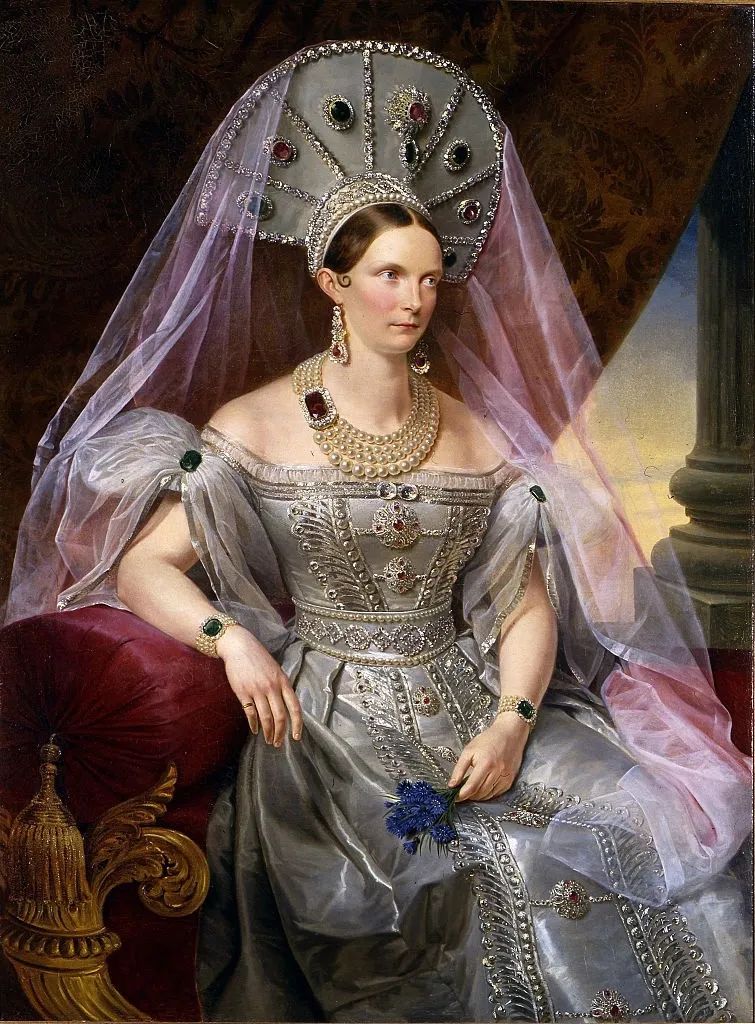
When it comes to legendary gemstone mines, most people think of Myanmar, India, and Colombia. These are indeed highly sought-after gem origins in the jewelry world, carrying an inherent prestige. But did you know that some of the rarest and more niche gemstones come from the cold, distant Ural Mountains of Russia? Today, let’s explore the Tsar’s treasure trove.
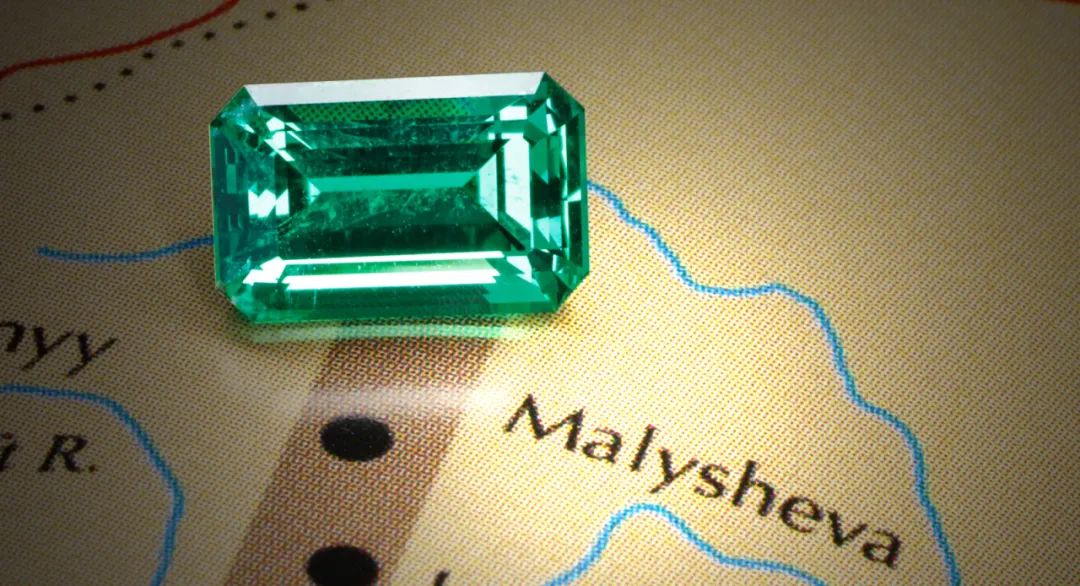
Russia, the world’s largest country by land area, spans both Europe and Asia, and undoubtedly possesses rich mineral resources. For instance, Russia ranks among the top global diamond producers. The Alrosa Group, a leading diamond mining company, accounts for 27% of global diamond production. In 2022, it even surpassed De Beers to become the year’s highest diamond producer by volume.
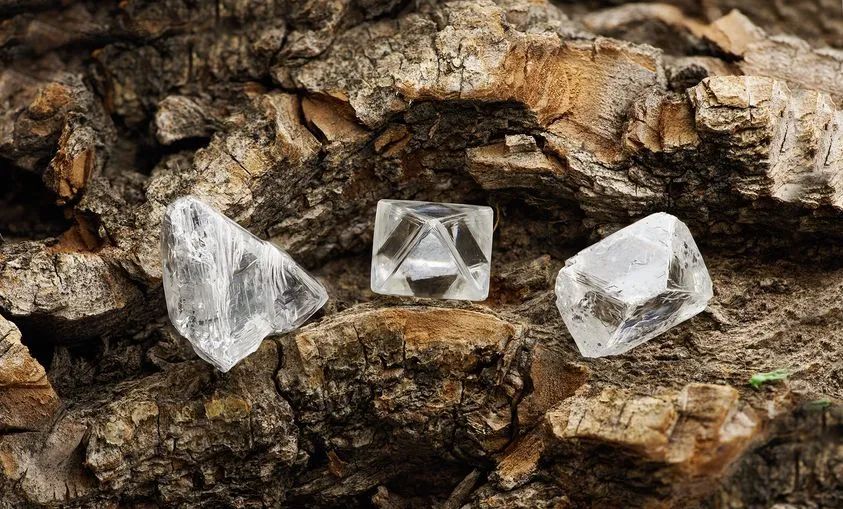
For Chinese consumers, Russia is also a major source of nephrite jade, commonly referred to as “Russian material.” Although not as fine as Xinjiang’s Hetian jade, it has become a mainstream choice in today’s market that cannot be ignored.
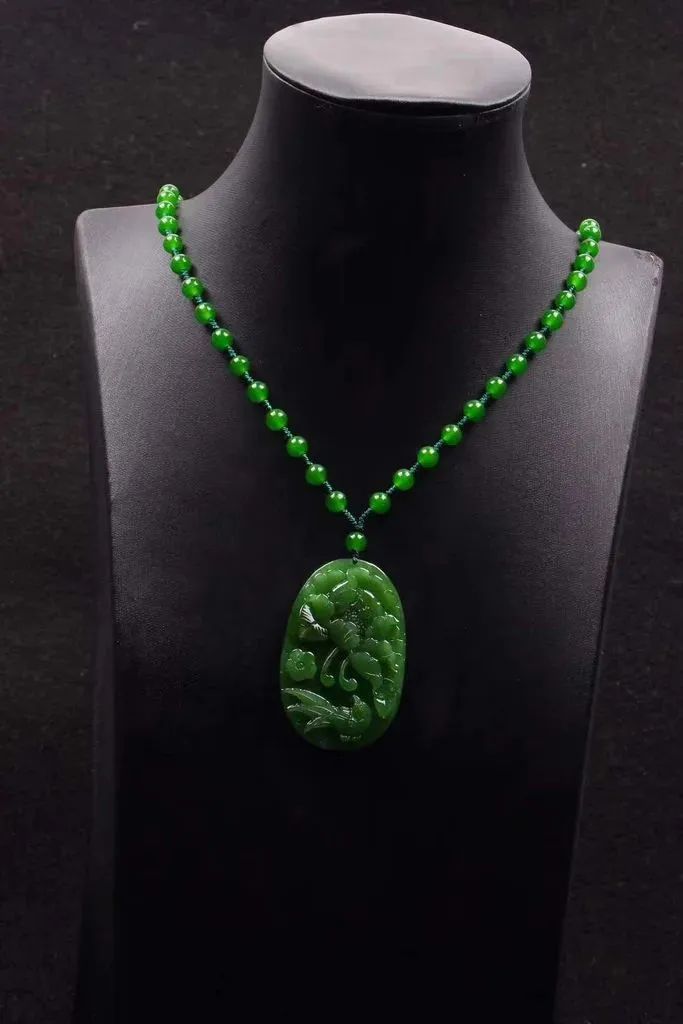
However, both diamonds and nephrite jade were only discovered in the 20th century. The true treasures of the Tsars are even more precious gemstones – alexandrite, demantoid garnet, and emerald – all of which come from the cold Ural Mountains.

Let’s start with emerald, one of the “classic three” gemstones. As is well known, the origin is crucial when buying emeralds, with Colombian Muzo mine emeralds considered the finest quality. However, as Colombian production has decreased, Zambian emeralds have also become highly sought after in the jewelry world. In fact, Russian emeralds are of excellent quality too, but due to the current scarcity of gem-quality emeralds, they remain more niche.

The Malysheva deposit in Russia’s Ural Mountains was discovered in 1833 and mining began in 1834. The deposit was initially named Mariinskoje, in honor of Tsar Nicholas I’s daughter Maria. At the time, it was the world’s largest emerald source.
Many large-carat emeralds in European royal collections from the mid-19th century came from Russia. This can also be seen in the emerald jewelry collections of Russian empresses throughout history – when you have a mine at home, you can really go all out with your jewelry.

By the 20th century, the quality of emeralds from this region declined, with many containing flaws and few reaching gem-grade quality. As a result, it fell out of the ranks of premium emerald sources. However, when a high-quality stone does appear, it’s truly exceptional, with impeccable color and clarity.
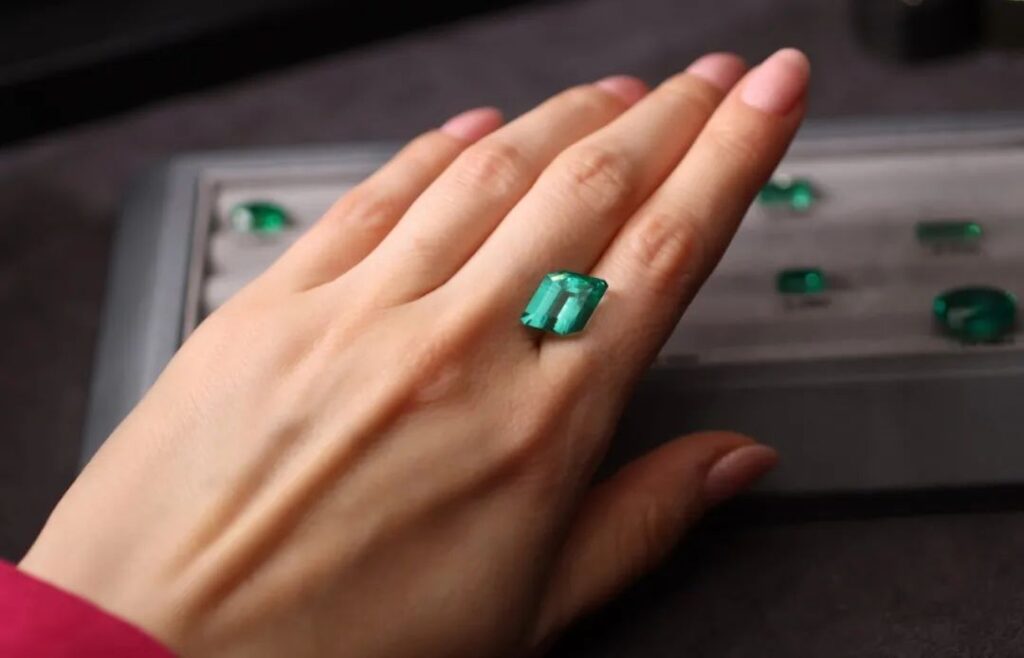
Another rare gemstone that becomes exponentially more valuable when prefixed with “Russian” is alexandrite, described as “emerald by day, ruby by night.” This gem appears green to blue-green in daylight and red to purplish-red under incandescent light. Its color saturation can range from medium to strong, and it belongs to the chrysoberyl family with color-changing properties.
Alexandrite was discovered in the 1830s in the Ural Mountains during emerald mining operations. Initially mistaken for emerald, its remarkable color-changing ability was soon recognized. It was presented to the royal family on the 12th birthday of then-Crown Prince Alexander II, hence its name.
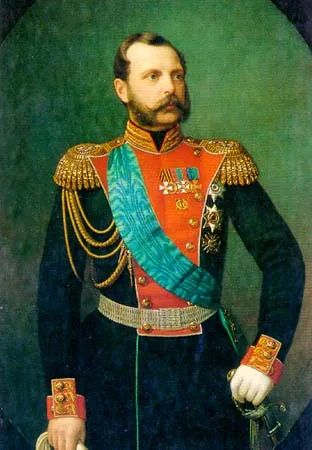
Legend has it that alexandrite was particularly favored by the Tsar because its color change from red to green matched the colors of the Russian military uniform.
The scarcity of alexandrite has made it one of the most coveted gemstones among collectors. Although alexandrite was discovered in Brazil, Sri Lanka, and India in the 1980s, these stones lack the intense color and purity of their Russian counterparts.
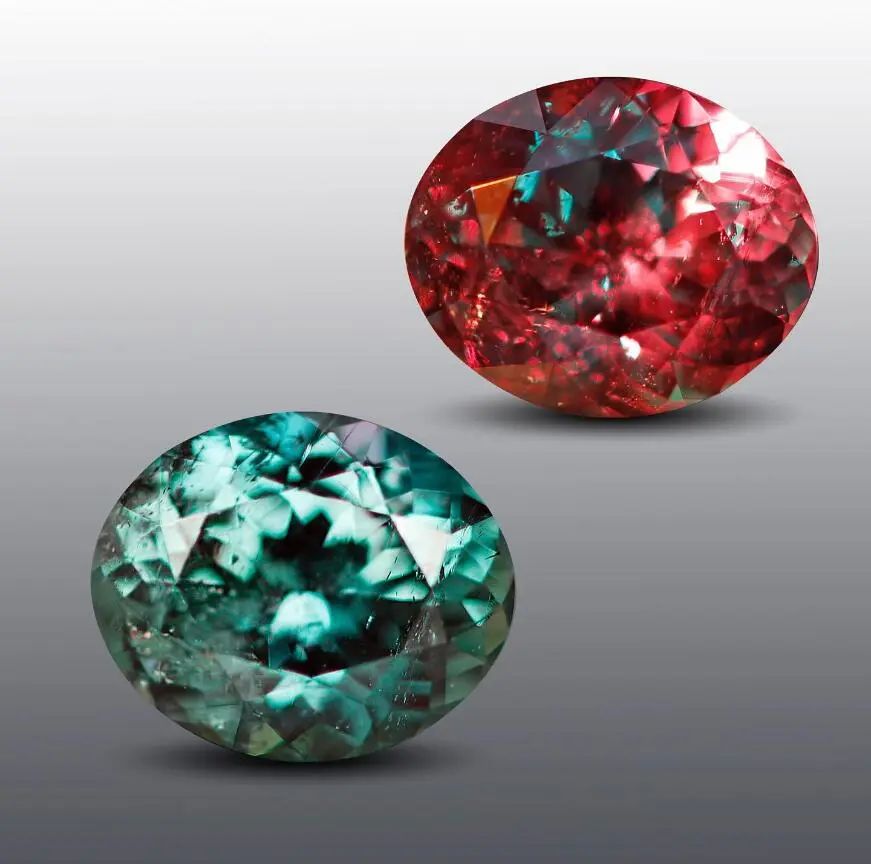
Gemstone from Tsarina Jewels
Russian alexandrite is incredibly rare. 2023 was considered a bountiful year because it yielded five alexandrites over 1 carat. If you can find an alexandrite with the intense colors characteristic of 19th-century discoveries, you would undoubtedly become the envy of the gemstone collecting world.
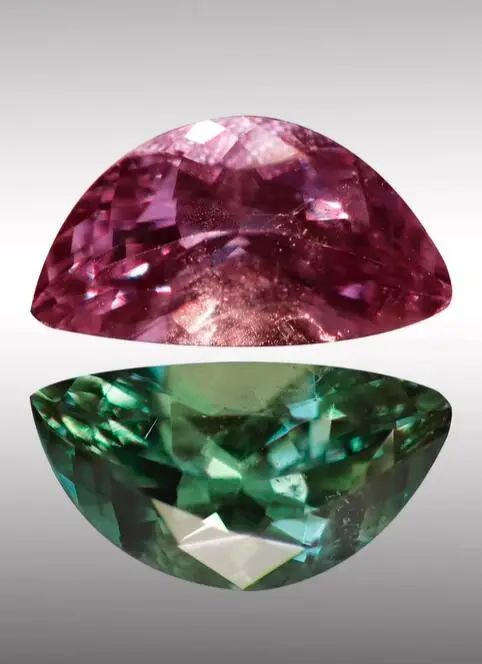
Gemstone from Tsarina Jewels
Finally, let’s introduce another rare gemstone from Russia’s Ural Mountains, equally beloved by the Tsars – demantoid garnet, also known as “the Tsar’s gemstone.” It possesses the strongest fire among green gemstones, with a dispersion of 0.057, even surpassing the famous fire of diamonds (dispersion 0.044). Hence its name “Demantoid,” meaning “diamond-like” in brilliance.
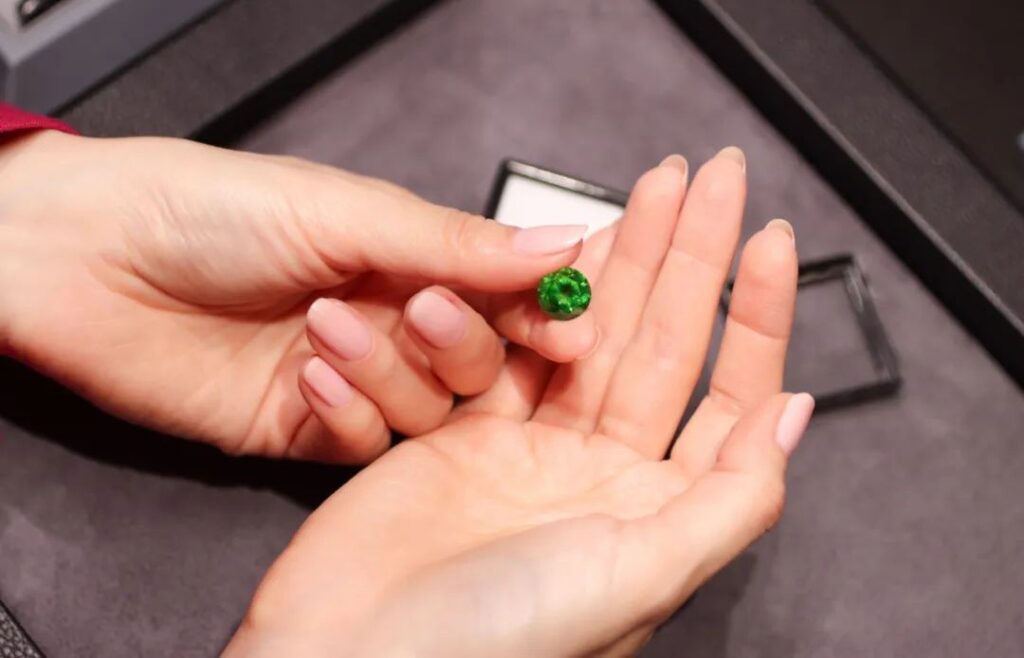
Like alexandrite, demantoid garnet is extremely rare and considered a “ceiling” in the collecting world. While alexandrite boasts a magical color-changing effect, demantoid garnet features what’s called “the world’s most expensive inclusion” – horsetail-shaped asbestos inclusions. For a long time, only Russian demantoids possessed these unique “horsetail” inclusions.
Thus, just as rubies from Myanmar and emeralds from Colombia are prized, Russian demantoids carry their own origin prestige.

Later, demantoids with “horsetail” inclusions were discovered in Iran, Namibia, and Madagascar. However, according to research by Tsarina Jewels, a Russian jeweler specializing in demantoids, the “horsetails” in demantoids from other locations often appear as single lines or irregular shapes.
Only in Russian demantoids do the “horsetails” frequently radiate from the center of the gem like fireworks. Therefore, to this day, Russian demantoids are still considered the finest quality.

Demantoid garnets rarely occur in large sizes. Most are under one carat, with high-quality two-carat stones considered very rare. A top-quality demantoid over five carats would be considered world-class. Despite their small size, many master jewelers are captivated by demantoids due to their unique fire and highly saturated green color.
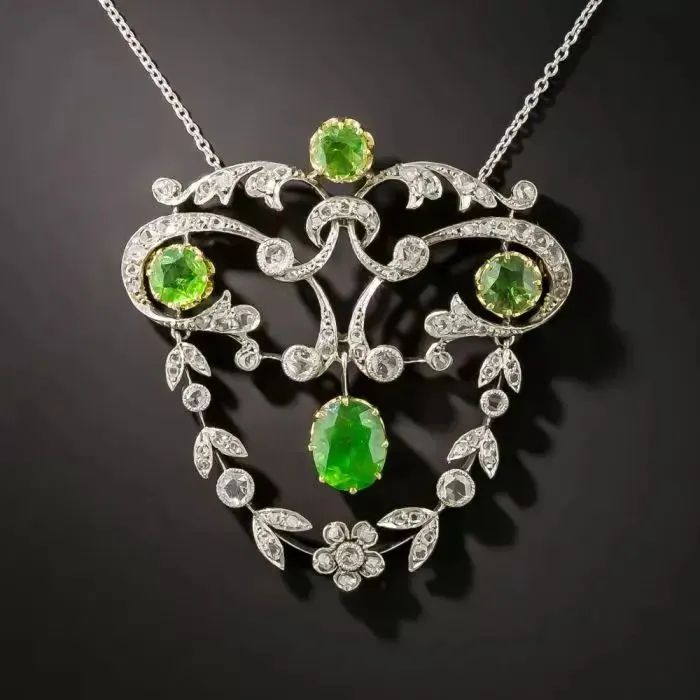
In conclusion, the Tsar’s treasure truly lives up to its reputation, with all gems emphasizing scarcity, especially alexandrite and demantoid garnet, which are incredibly hard to find. Unfortunately, their rarity and small sizes make them difficult to feature in high jewelry, as even major jewelry brands struggle to acquire large carat stones.
Perhaps this is why Russia’s Ural Mountains are not as well-known as famous gem sources like Myanmar, Colombia, or Sri Lanka – because so few people have the opportunity to own these gems. Such high-end, niche gemstones may remain elusive treasures in the jewelry world, more legend than reality for most.
The Tsar’s Secret Treasure: Russia’s Hidden Gem Mines Rival the World’s Best
Tweet





